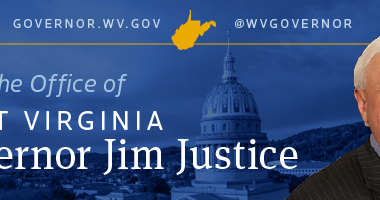By LACIE PIERSON
The Herald-Dispatch
HUNTINGTON — On a campus where everyone bleeds green, Marshall University administrators continued to work on new ways to manage the school’s green Wednesday.
The Marshall University Board of Governors approved a tuition and fee structure with the goal of simplifying the financial planning process for students.
The measure was approved about eight weeks ahead of the presentation on the university’s budget for the 2016 fiscal year, which Interim President Gary White said university officials were trying to draft without dipping into the university’s reserve funds.
Wednesday’s budget talks didn’t include any mention of increasing tuition at Marshall.
No recommendations to increase tuition costs had been drafted as of Wednesday, White noted during the meeting, but he did not say whether tuition hikes were off the table altogether.
The board approved the tuition and fee structure in concept but without any numbers indicating how that structure would affect the actual cost of tuition and fees next year.
Those numbers, along with the proposed budget, were expected to be presented before or during the board’s next regular meeting on June 24.
The new tuition and fee structure was developed as a way to allow current and prospective students to assess their costs each semester, White said.
“Tuition calculation for a student here at Marshall University has been a multifaceted and very complicated process with lots of different fees,” White said. “A student literally could not determine what their tuition bill would be like until they got the invoice. Virtually all other institutions have made a structural change like the one we are asking you to make today.”
Under the new structure, most course and lab fees will be eliminated in favor of a streamlined fee based on the college in which a student’s major is housed and the student’s program of study.
In the new structure, as long as a student knows which college and program he or she is in and status as a resident, non-resident or metro student, the student would be able to look at a chart and determine what uition and fees will be, said Mary Ellen Heuton, Marshall’s chief financial officer.
Students enrolled in labs or online classes will have to pay additional fees, Heuton said.
The tuition and fees restructure was one of the key points of a presentation White made during the board’s regular meeting, and he also presented what he called his road map for the 2016 budget.As of now, that budget includes an $8.5 million deficit the university will have to erase, and White said he wanted to avoid using the university’s reserve funds for another year.
Last year, the university had to overcome a $14.2 million budget deficit, through hiring freezes, using reserve funds and increasing tuition for the fourth year in a row.
At the start of the 2014 fall semester, the base tuition cost was $3,262, according to the fee schedules presented to the board at the time the tuition increases were approved.
White indicated university officials were working to make up the difference through the tuition and fee restructuring, a reduction in classroom enhancements, faculty and staff vacancies and other restructuring through Marshall’s 20/20 strategic plan.
The 20/20 plan is an ongoing project to increase financial and operational efficiency and create a more business-like financial management system at the university. It was initiated by former Marshall president, the late Dr. Stephen Kopp, and has been embraced by White since he took the helm of the university in January.
“This is a process we’ve had tremendous participation and input from every group on this campus,” White said. “As you can imagine, we haven’t always agreed on everything, but it’s a collaborative process.”
Working through the plan, White said the university will be able to save money by reducing the number of supervisors at the university. The ratio of employees to supervisors about 4 to 1 while the average ratio at Marshall’s peer universities is about 10 to 1, White said. Some of those changes could take place immediately while others would take years to cultivate, he said.
The budget draft included employee pay raises that were approved by the board last year, but White proposed deferring employee salary increases until January 2016, a move that was projected to save the university $1 million.
The road map did not include an outright tuition increase, but other universities in the state have increased tuition between 5 and 7 percent, White said, which was something he said Marshall officials “will have the benefit of knowing” ahead of producing its own budget.
While the next board meeting is scheduled for June 24, White said it was possible the board could meet for a special meeting in light of its search for the successor to Kopp.
If a special meeting was called, White said it was likely the board would receive a draft of the budget for consideration.
For more information, visit http://www.herald-dispatch.com/x1820087413/Marshall-to-revamp-stucture




